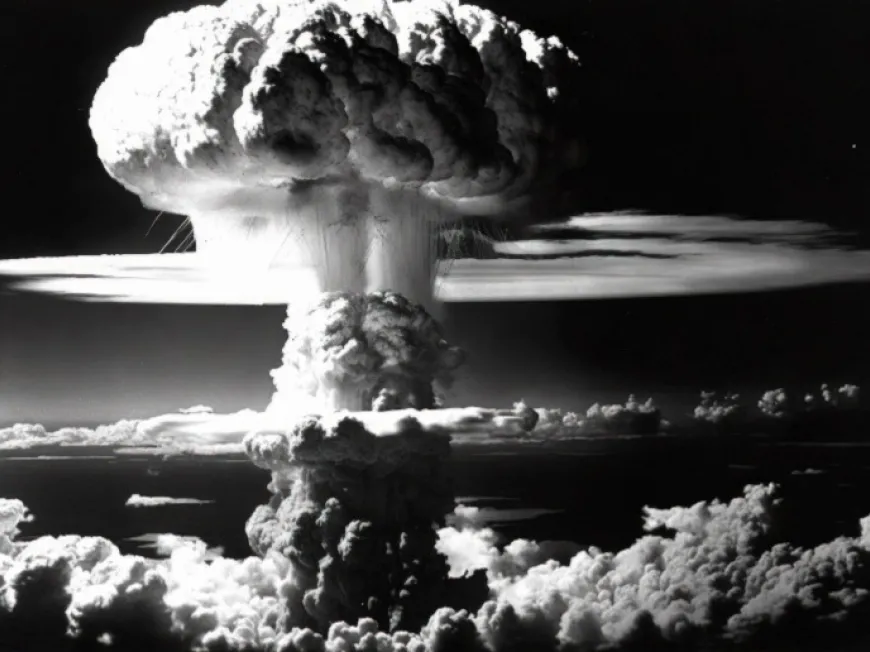8 common myths about nuclear weapons: Fact or fiction?
 Myths about nuclear weapons (Getty Images)
Myths about nuclear weapons (Getty Images)
Nuclear weapons are surrounded by many myths and misconceptions that have been formed over decades. Since its invention, it has inspired fear and fascination, as well as much debate and speculation.
RBC-Ukraine debunks popular myths around nuclear weapons.
Nuclear weapons are unstoppable and invincible
One of the most common myths is that nuclear weapons are omnipotent and unstoppable. While they are indeed incredibly destructive, some defense strategies can mitigate their impact.
Fact
Missile defense systems are being developed, such as the US Ground-Based Midcourse Defense (GMD) system, designed to intercept and destroy incoming nuclear warheads before they reach their targets.
Besides, there is progress in early warning systems and international diplomacy efforts, such as arms control treaties (e.g., START, START III) that play a huge role in preventing the use of nuclear weapons.
Nuclear war would destroy all of humanity
The notion that a nuclear war would lead to the extinction of humanity is a dramatic, albeit exaggerated, belief.
Fact
While a large-scale nuclear conflict would undoubtedly cause unprecedented destruction and loss of life, experts say it would not necessarily lead to the extinction of humans.
The environmental and climatic consequences known as nuclear winter could cause severe agricultural collapse and social upheaval, but pockets of human civilization could survive.
Studies, such as those conducted by the International Physicians for the Prevention of Nuclear War (IPPNW), highlight the catastrophic consequences but do not predict total annihilation.
More countries have nuclear weapons than in reality
There is a misconception that many more countries possess nuclear weapons than in reality.
Fact
As of 2024, only nine countries are known to have nuclear weapons: the United States, Russia, the United Kingdom, France, China, India, Pakistan, Israel, and North Korea.
This limited number is the result of strict restrictions and international treaties aimed at non-proliferation, such as the Nuclear Non-Proliferation Treaty (NPT). It has played an important role in preventing the spread of nuclear weapons and promoting disarmament.

Countries that are members of the nuclear club (photo: Business Insider)
Low-power tactical nuclear weapons are safe
The term "tactical nuclear weapon" often leads to the idea that these smaller bombs are less dangerous or more "applicable" than their strategic counterparts.
Tactical nuclear weapons, although less powerful than strategic weapons, still have the destructive power to cause significant human loss and environmental disasters.
A report by the Federation of American Scientists (FAS) emphasizes that the use of even a single tactical nuclear weapon could escalate a conflict into a full-scale nuclear war, making it extremely dangerous.
Atomic bombs ended World War II
A widespread but simplistic belief is that the atomic bombings of Hiroshima and Nagasaki were the sole reason for Japan's surrender in World War II.
Fact
Although the bombings played a decisive role, they were not the only reason for Japan's surrender. Historical analysis shows that the Soviet Union's declaration of war against Japan and the subsequent invasion of Manchuria also played a key role in Japan's surrender.
The combination of these events made Japanese leadership recognize that further resistance was pointless.

The bombing of Hiroshima (photo: Mises Institute)
Nuclear weapons have not been used since World War II
Many believe that nuclear weapons have been used only twice - in Hiroshima and Nagasaki.
Fact
Indeed, nuclear weapons have not been used in military conflicts since 1945. However, there were many tests, and there have been situations when the world was on the brink of nuclear war. A striking example is the Cuban Missile Crisis of 1962 when the world was the closest to starting a nuclear war.
More than 2,000 nuclear tests have been conducted around the world, which have affected the environment and health, especially among the local population in the test areas.

The United States began using the Marshall Islands as a nuclear weapons test site in 1946 (photo: Wikimedia)
A nuclear explosion would instantly destroy an entire city
The image of a nuclear explosion instantly wiping out an entire city is a powerful and lasting one.
Fact
The reality is more complicated. The extent of the destruction depends on the power of the bomb, the height of its detonation, and the geographical features of the city. For example, the bomb dropped on Hiroshima had a yield of about 15 kilotons and caused massive destruction and loss of life, but not all buildings were completely destroyed.
Modern nuclear weapons are much more powerful, but even their impact will vary depending on these factors. The initial explosion, heat radiation, and subsequent fires will cause widespread destruction, but not all areas of the city will be affected equally.
Drop and hide is a futile measure
The Cold War civil defense response known as "drop and hide" is often derided as ineffective against a nuclear explosion.
Fact
While drop and hide will not protect against a direct hit or direct impact of the initial blast, it can save lives in areas farther away from the epicenter. This advice is intended to protect people from debris and heat flashes, which can cause serious burns.
According to a report by the US Department of Homeland Security, sheltering can reduce greatly the number of injuries caused by the blast wave and heat.
Important to note: Drop and hide is a last resort, as nothing can fully protect against a nuclear explosion. But in certain cases, it can help to survive.
Sources: Washington Post, Publishers Weekly, RealistRevolt.

